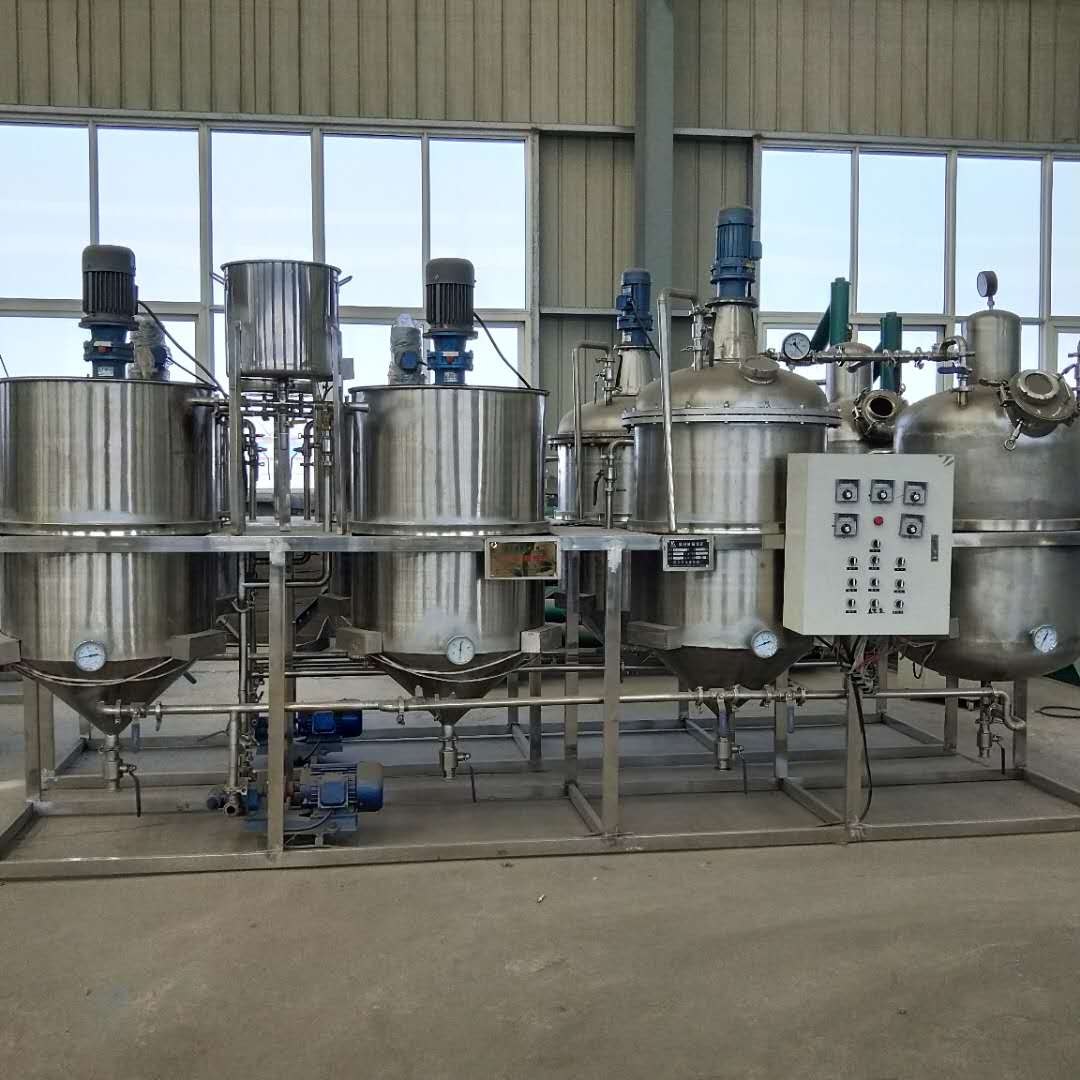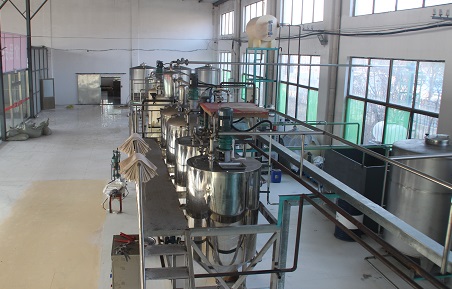The refining process commonly used in oil refining equipment is divided into chemical refining and physical refining. The two differences are mainly in the way of removing free fatty acids. They are usually selected according to different occasions, or both methods are used at the same time. However, there is a clear tendency to adopt more physical methods because the waste water and refining consumption produced by physical refining methods are significantly reduced, which is more economical and beneficial to the environment. Due to different refining methods, the form and requirements of oil degumming are also different. The degumming of chemical refining can be carried out together with alkali refining, while physical refining is required to be carried out separately, and the amount of residual phosphorus in the degummed oil is strictly required. The quality of degumming directly affects the efficiency of physical refining and the quality of the product. Generally, it is required to contain The phosphorus content is below 15mg/kg, preferably around 5mg/kg, which requires the establishment of an efficient and stable physical degumming process to meet the requirements of physical refining.

Physical refining is gradually applied in the production of oils and fats due to its advantages of low equipment investment, high refining rate, low cost, and no environmental pollution. Although due to its own limitations, it has been used as a feasible process to coexist with traditional chemical refining processes. When selecting a refining process, refining equipment needs to be comprehensively considered based on heavier factors such as the variety, quality, operating costs, and environmental protection costs of the raw oil.
Whether it is physical refining or chemical refining, the first step is to remove phospholipids, β-carotene, heat-sensitive pigments and trace metals from the oil. For physical refining, the degumming process is very important. Only thorough degumming, so that the content of phospholipids in the raw materials is within 0.015%, that is, the phosphorus content is less than 5ppm, can steam refining be carried out normally, and the refining rate can be increased to obtain high stability. Refined oil. If the degumming process is not in place, it will increase the consumption of activated clay in the decolorization process, and it will also cause the reverse color of the oil in the deodorization section, which will affect the appearance and quality of the oil. For physical refining, if the degumming process is not in place, the advantages of physical refining will not be reflected.
For palm oil, rice bran oil, sunflower oil and other crude vegetable oils with higher free fatty acids and degummed oils with lower phospholipid content purchased from independent refineries, physical refining is the most preferred method. For the low acid value of soybean oil, it is necessary to weigh the product quality and operating costs. The physical refining method cannot remove the gossypol and various unsaponifiables in the oily cottonseed oil. Only the lye can neutralize the gossypol, and the gossypol can be removed with the soapstock during decolorization and deodorization. Therefore, cottonseed oil cannot use physical refining, only chemical refining.

Domestic oil factories process a wide variety of raw materials and have a short production cycle. In order to increase output and increase corporate profits, oil factories also undertake the task of refining crude oil. Considering the scale of investment savings, it is impossible for oil plants to build two production lines, physical refining and chemical refining, and the main difference between physical refining and chemical refining lies in the acid refining and alkali refining processes. Although physical refining processes have been used more and more in recent years, chemical refining still competes with physical refining due to its advantages that are suitable for all edible oils. Therefore, when choosing a suitable refining method, it must be based on the raw material oil. For their respective characteristics, choose the appropriate refining method to achieve the goal of obtaining high-quality finished products at the lowest operating cost.
Copyright © Henan Zhongxing Grain And Oil Machinery Co.,Ltd. All Rights Reserved. Powered by MetInfo